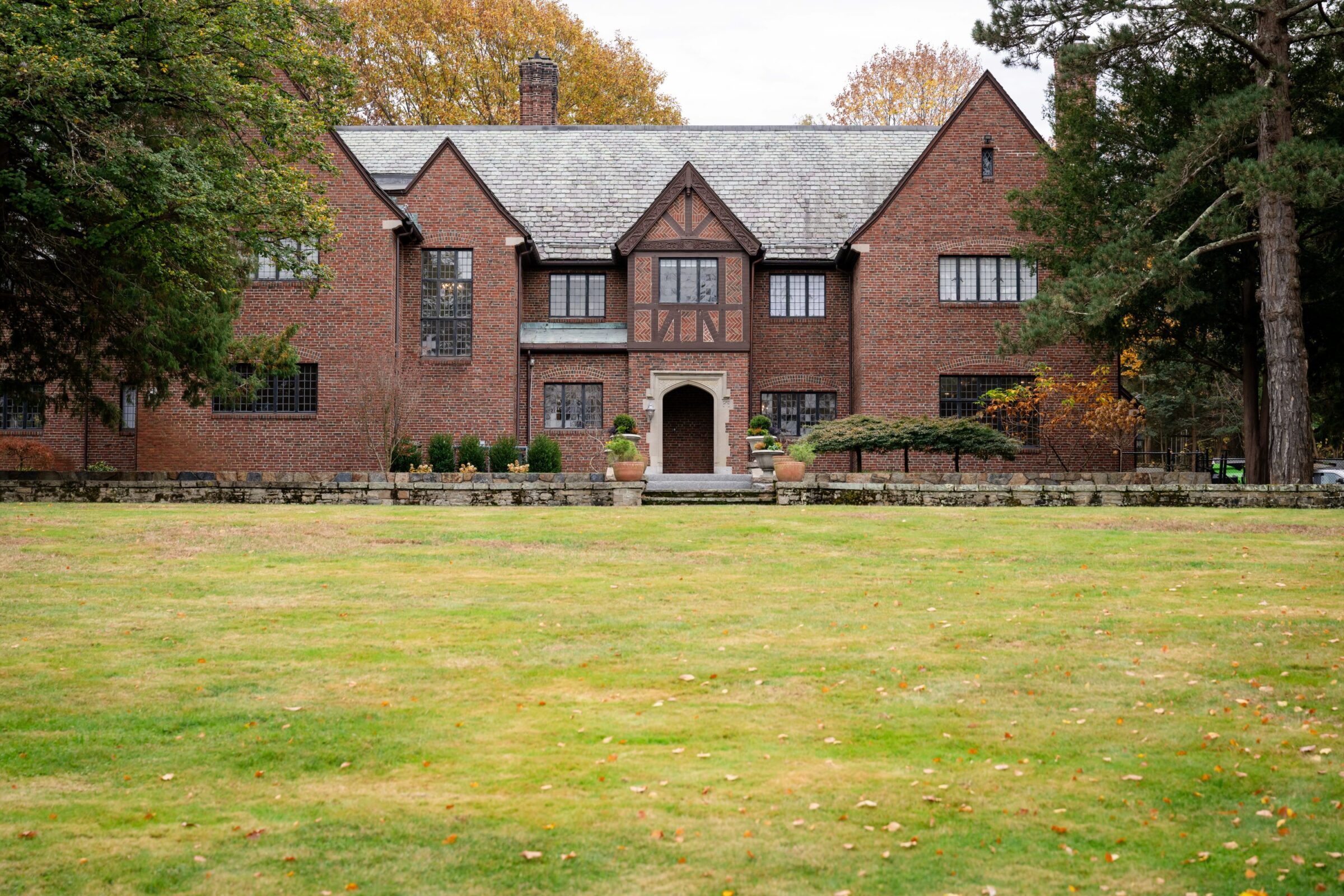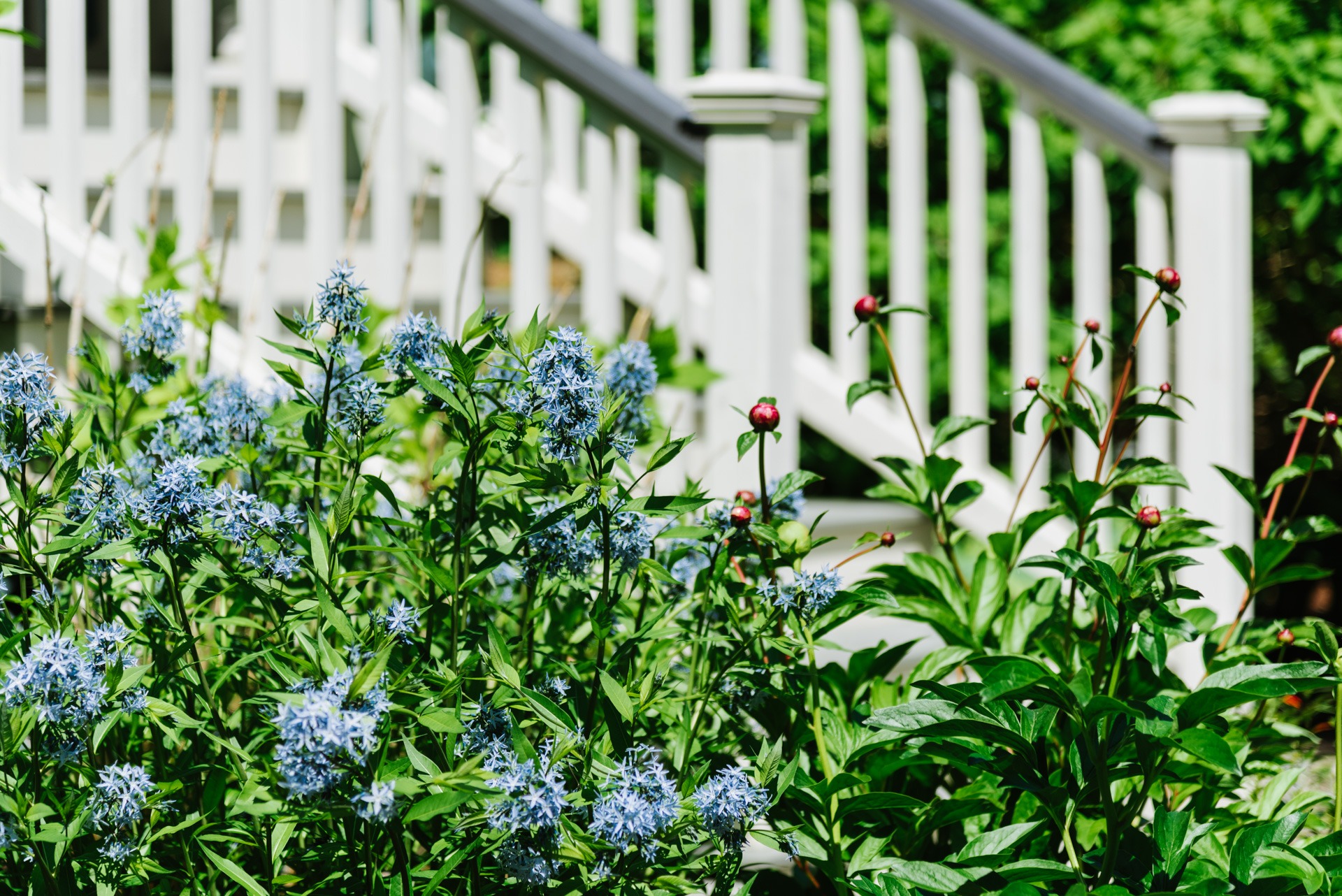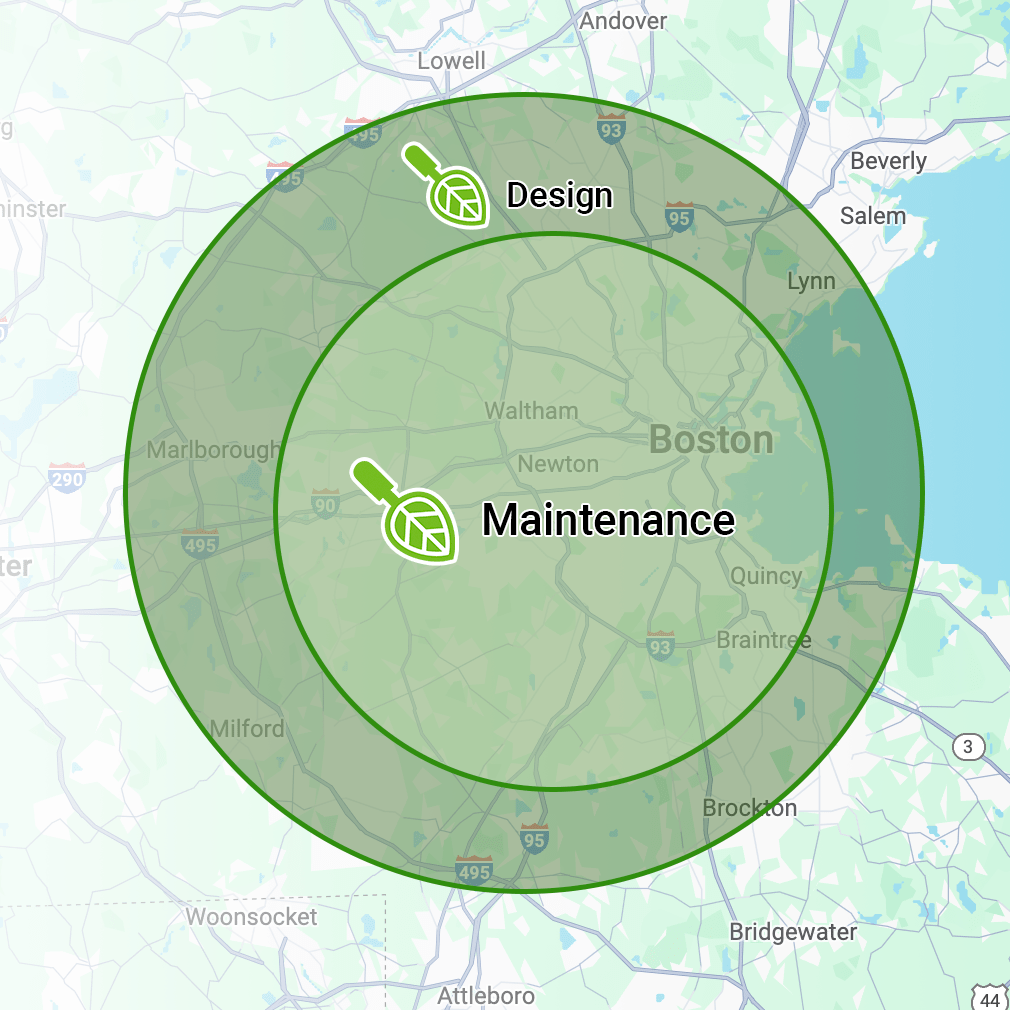Tree Health Assessments with Landscaping Maintenance Services in Jamaica Plain, MA
Maintaining healthy trees is a crucial aspect of landscape care. Trees not only enhance the aesthetic value of a property but also contribute to environmental well-being by providing shade, improving air quality, and supporting wildlife habitats. Conducting regular tree health assessments ensures that trees remain vibrant, structurally sound, and free from potential hazards.
Why Are Tree Health Assessments Important in Landscape Design in Jamaica Plain, MA
- Early Detection of Problems: Regular evaluations help identify issues like pests, diseases, or structural weaknesses before they progress into significant concerns.
- Maintaining Safety: Trees with dead branches or compromised structures can pose risks to people and property. Assessments reduce these risks by addressing issues proactively.
- Promoting Longevity: A healthy tree will thrive longer with proper monitoring and care.
Key Components of a Tree Health Assessment by Landscaping Companies Near Me
- Examine the canopy for signs of thinning leaves, discoloration, or defoliation.
- Check for broken branches or areas with deadwood.
- Inspect bark condition for cracks, holes, or fungal growth.
- Look for exposed roots, soil compaction, or damage caused by construction activities.
- Assess drainage around the root zone to prevent waterlogging or drought stress.
- Identify signs of insect infestations such as chew marks on leaves or sticky residue (honeydew).
- Look for fungal infections like mildew or cankers on branches and trunks.
- Evaluate branch unions and trunk stability to detect weak spots that might lead to failure during storms.
- Check for leaning trees that could indicate root instability.
Benefits of Professional Tree Health Assessments
- Expertise in diagnosing complex issues such as hidden decay within trunks.
- Recommendations for pruning techniques to improve tree structure.
- Guidance on planting companion plants that support overall soil health around trees.
| Issue Detected |
Recommended Action |
| Pest infestation |
Apply eco-friendly pest control methods |
| Soil compaction |
Aerate soil around the root zone |
| Dead branches |
Schedule pruning |
Sustainable Practices in Tree Care
Incorporating sustainable practices into tree maintenance is vital for long-term health. Avoid using harsh chemical fertilizers; instead, focus on organic options that enrich the soil naturally without harming surrounding vegetation.
By prioritizing regular assessments and taking timely action based on findings, landscapes can retain their beauty while ensuring safety and ecological balance.
Disease Diagnosis & Treatment
Effective disease diagnosis and treatment is a critical aspect of maintaining the health and longevity of your landscape. When left untreated, diseases can quickly spread, causing irreparable damage to trees, shrubs, and plants. By implementing proper diagnostic techniques and timely treatment strategies, you can prevent the decline of your green spaces.
Identifying Signs of Plant Diseases in Jamaica Plain, MA Landscape Maintenance
- Discolored Leaves: Yellowing, browning, or spotting on leaves often suggests fungal or bacterial infections.
- Wilting or Drooping: Plants that are not receiving enough nutrients due to root rot or pest activity may appear wilted.
- Unusual Growth Patterns: Galls, abnormal swellings, or stunted growth can be signs of viral infections.
- Fungal Growth: White powdery patches (powdery mildew), rust-colored spots (rust), or mushroom-like growths near the base of plants indicate fungal issues.
- Defoliation: Excessive leaf drop out of season can signal stress caused by infection.
Regular monitoring is vital to catch these symptoms early.
Common Types of Plant Diseases in Landscaping in Jamaica Plain, MA
| Disease Name |
Cause |
Symptoms |
Commonly Affects |
| Powdery Mildew |
Fungal Infection |
White powdery coating on leaves |
Deciduous trees & shrubs |
| Root Rot |
Overwatering/Fungi |
Wilting, yellowing leaves |
Trees & ornamental plants |
| Leaf Spot |
Bacteria/Fungi |
Brown/black spots on foliage |
Various shrubs & trees |
| Fire Blight |
Bacterial Infection |
Blackened branches & flowers |
Fruit-bearing trees |
Understanding the cause helps design a targeted treatment plan.
Steps for Disease Diagnosis with Landscapers in Jamaica Plain, MA
- Inspect Regularly: Walk through your landscape routinely to check for changes in plant appearance.
- Collect Samples: If you notice unusual symptoms, collect samples (leaves, soil) for closer examination.
- Use Diagnostic Tools: A magnifying glass, smartphone apps designed for plant diagnostics, or professional lab testing can help identify specific pathogens.
Treatment Strategies with Landscaping Companies in Jamaica Plain, MA
Cultural Practices
- Improve soil drainage to reduce conditions favorable to fungi.
- Prune infected branches and dispose of debris properly to limit spread.
- Avoid overhead watering as it fosters fungal growth on foliage.
Biological Controls
Introduce beneficial organisms like predatory insects or fungi that suppress harmful pathogens naturally.
Chemical Treatments
Use fungicides or bactericides when necessary. Always follow label instructions and apply products during optimal conditions for effectiveness.
Integrated Pest Management (IPM)
Combine cultural practices with biological and chemical methods in a sustainable manner to manage diseases long-term without over-reliance on chemicals.
Preventative Tips from a Landscape Contractor in Jamaica Plain, MA
- Select disease-resistant plant species suited to your region’s climate.
- Maintain proper spacing between plants to promote airflow and reduce humidity levels around foliage.
- Regularly fertilize and mulch your garden beds to strengthen plant health.
By addressing diseases proactively through careful diagnosis and effective treatment strategies, you can ensure a thriving landscape year-round. Healthy plants not only enhance aesthetic appeal but also contribute significantly to environmental balance in outdoor spaces.
Disease Diagnosis & Treatment
Effective landscape maintenance involves identifying and addressing plant diseases promptly to ensure the health and longevity of trees, shrubs, and other greenery. Disease diagnosis and treatment are critical processes that require a combination of observation, expertise, and proactive care strategies.
Common Signs of Plant Diseases
- Discolored Leaves: Yellowing, browning, or unusual spotting may indicate fungal or bacterial infections.
- Wilting: Plants that appear droopy despite adequate watering could be suffering from root rot or vascular diseases.
- Fungal Growth: Presence of powdery mildew, rust spots, or black mold on leaves or stems.
- Cankers: Cracks or lesions on tree trunks and branches can signify serious infections.
- Stunted Growth: Affected plants may fail to grow as expected or produce fewer flowers/fruits than usual.
Steps for Diagnosing Plant Diseases
- Visual Inspection: Examine leaves, stems, roots, and soil conditions for any abnormalities.
- Identify Patterns: Check whether the symptoms are isolated to one plant or affecting multiple plants in a group.
- Are there issues with drainage?
- Has there been an overuse of fertilizers?
- Are pests present nearby?
- Research Symptoms: Use reputable gardening resources or consult a professional to match symptoms with potential diseases.
- Soil/Plant Testing (if necessary): For more serious cases, send soil samples or plant tissues to local agricultural extension services for analysis.
Effective Treatment Methods
Once a disease has been identified, treatment should begin immediately to halt its progression and prevent it from spreading further.
- Remove infected leaves, branches, fruits, and debris regularly.
- Disinfect pruning tools after each use to avoid cross-contamination.
- Apply fungicides specifically designed for the diagnosed condition (consult product labels carefully).
- Use organic alternatives like neem oil for eco-friendly disease management.
- Avoid overcrowding plants by pruning overcrowded branches.
- Ensure proper spacing between plants during installation stages.
- Nutrient-deficient plants are more susceptible to diseases; use slow-release fertilizers as needed.
- Incorporate compost into soil periodically to promote healthy microbial activity.
Preventative Measures for Disease Control
| Action |
Benefit |
| Choose disease-resistant species |
Reduces vulnerability to common pathogens |
| Rotate plant varieties |
Prevents buildup of soil-borne diseases |
| Water efficiently |
Limits fungal growth caused by standing water |
| Regular monitoring |
Detects issues before they escalate |
By maintaining vigilance and applying targeted treatments when needed, you can preserve the health of your landscape while encouraging sustainable growth across all plant varieties under your care.
Deep Root Fertilization for Landscape in Jamaica Plain, MA
Deep root fertilization is a specialized landscaping technique designed to promote the long-term health and vitality of trees, shrubs, and other plants. This process provides essential nutrients directly to the root zone, ensuring that plants receive what they need to thrive, particularly in stressed or nutrient-deficient soils. Below is a detailed explanation of how this method works, its benefits, and when it should be used.
What is Deep Root Fertilization?
Deep root fertilization involves injecting a nutrient-rich solution into the soil at depths ranging from 6 inches to 12 inches or more. This technique targets the critical zone where roots actively absorb nutrients and water. By bypassing the surface layer of soil, which may be compacted or depleted of nutrients, deep root fertilization ensures direct delivery of vital components.
The process typically uses specialized equipment such as a soil injection probe connected to a pressurized tank. A professional landscaper evaluates your plant’s needs before determining the specific mixture of nutrients required.
Benefits of Deep Root Fertilization
- Restores depleted soils by adding essential organic matter and nutrients.
- Enhances microbial activity in the soil for better long-term plant health.
- Encourages deeper and stronger root systems.
- Helps plants withstand drought conditions and extreme weather by improving resilience.
- Loosens compacted soil around the roots to improve aeration.
- Allows water, oxygen, and nutrients to penetrate effectively into the root zone.
- Provides trees and shrubs with extra support during periods of drought, heat stress, or pest infestations.
- Strengthens plants already weakened by poor growing conditions or environmental factors.
When Should You Consider Deep Root Fertilization?
- Trees or shrubs show signs of stress (e.g., wilting leaves or stunted growth).
- Plants are located in urban environments with compacted or nutrient-poor soils.
- Your area experiences recurring droughts or harsh weather conditions that limit natural nutrient absorption.
- Regular maintenance practices such as mulching or surface fertilization are insufficient for optimal growth.
Key Nutrients Used in Deep Root Fertilization
| Nutrient |
Function |
| Nitrogen (N) |
Promotes healthy leaf development and overall growth |
| Phosphorus (P) |
Encourages strong root development |
| Potassium (K) |
Improves disease resistance while enhancing drought tolerance |
| Micronutrients |
Supplies elements like iron, zinc, magnesium for balanced nutrition |
Working with Professionals
Although some homeowners attempt DIY deep root fertilization using basic tools like spikes or watering cans, hiring professionals ensures accuracy in nutrient composition and application depth. Certified arborists assess your landscape holistically to create tailored solutions that align with plant health goals while avoiding over-fertilizing risks.
By incorporating deep root fertilization into your regular landscape maintenance plan, you can proactively address potential issues that may compromise tree and shrub health—ensuring their beauty and longevity for years ahead.







